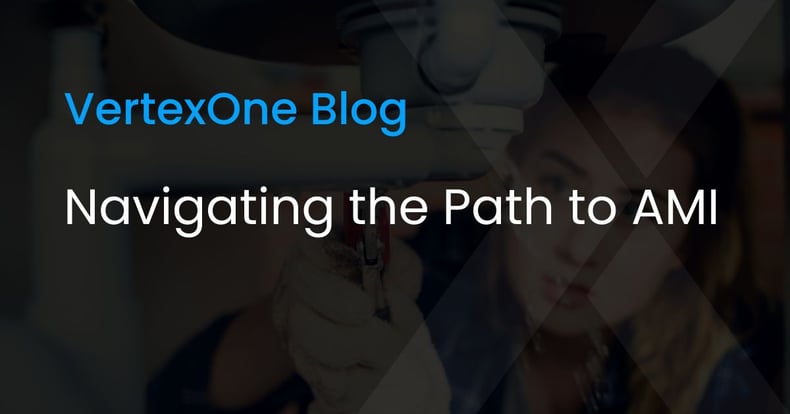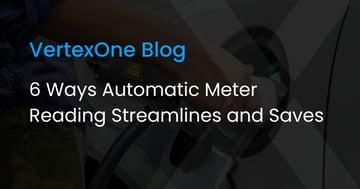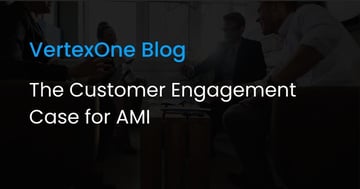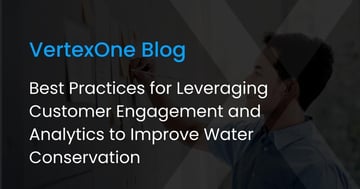
On February 5th, 2020 the American Water Works Association released “AWWA’s Best Practices for AMI System Rollout as learned by the FGUA” exploring the Florida Governmental Utility Authority’s experience transitioning 27,500 manual meters to Advanced Metering Infrastructure (AMI). The article highlights lessons learned from the AMI project and best practices for other utilities to consider. With the analysis largely focusing on the design, construction and operational components of an AMI rollout, there was a gap for additional best practices utilities should incorporate for a successful AMI implementation and to drive long-term value from the investment.
Communicating the value of AMI
Because AMI implementations can take years to complete, it is beneficial to communicate the end-user benefits well in advance to avoid delays and backlash from customers. Utilities must incorporate a proactive customer engagement strategy to support deployment efforts. Before the first smart meter goes into the ground, utilities must gather insights into water use patterns and overall performance by analyzing non-AMI data. This allows utility staff members to group customers for targeted communication, craft relevant metrics, and guide where the AMI meters will be rolled out.
Nowadays, more than 77% of Americans own at least one smartphone and are accustomed to receiving timely and targeted communication from their service providers. Banks send immediate text and email notifications for suspicious activity, insurance companies offer customer service chatbots, and energy providers send live high usage alerts. Simply put, the modern-day customer expects more from their service providers. Customers are used to having actionable information at their fingertips and utilities must meet these demands or risk losing their support. This is especially the case for water utilities as water rates will inevitably continue to rise.
As a solution, utilities must take a proactive approach to total customer engagement. Door hangers are no longer as effective today as they were before, and information published on a utility’s website or social media inevitably means many won’t see it in a targeted or timely manner. These methods are not personalized and require a lot of work for the customers to find the information. Utilities should work with customers to ensure information is sent directly through the customer’s preferred communication method.
In evaluating engagement software options to help surface AMI benefits, utilities should consider an easy to use interface. Utility staff members have a lot to deal with and should be able to, with the click of a button, target and notify customers of AMI construction and the benefits customers should expect. This method reduces the cost and time of outbound communication processes while simultaneously increasing customer satisfaction, setting proper expectations for an AMI transition, and delivering self-service options down the road.
Amplifying AMI Benefits
Seeing that AMI systems can provide more accurate consumption reads, this may initially mean more leaks detected and higher bills for some customers. The resulting spike in work orders and customer service call volumes can further thin utility resources. Even though implementing an engagement platform is a fundamental way to drive customer self-service and value from a smart meter system, relying on meter manufacturers for this solution may prove limiting. Many utilities elect multiple different meter manufacturers throughout their service area, and portals offered by meter manufacturers are often unable to integrate across meter brands due to their focus on hardware. Therefore, seeking a meter agnostic third-party software platform provider can yield large system-wide benefits. During a recent transition to smart meters, the Village of Lombard sought the early adoption of a customer portal primarily to improve billing accuracy, operational efficiencies, and leak detection processes. The result was realized through a large decrease in customer call volumes and staff time saved.
Upon installation of a smart meter network, effective water meter data management can often be overlooked with a simple integration of AMI data with billing software or electing an MDM “lite” as provided by the meter manufacturer. This approach skips many AMI benefits and leaves customer service staff without the proper tools to understand historical consumption and quickly resolve customer inquiries. While previous methods of manual reporting may have been practical, the AMI data necessitates a new approach to data management. Implementing the appropriate MDM and consumption analytics software drives system efficiencies through automated alerting and reporting with deeper insights on irrigation violators, apparent losses, meter data quality, and real time leaks. Initially overwhelmed by AMI data, Mammoth Community Water District implemented an analytics platform to better understand consumption information and improve leak detection processes. This allowed addressing problems in a timely manner, improving customer satisfaction, and streamlining customer service processes.
Advanced metering infrastructure is a core foundation to drive the overarching goals of revenue stability, operational efficiencies, system resiliency, and improved customer relationships, but an early adoption of the appropriate software systems pave the way for a smooth transition and success in the future. A strong approach to customer engagement and data management yield increased value in an AMI system and build customer support for future infrastructure initiatives.
AWWA’s best practices are undoubtedly a great start. Paired with the above tips, utilities will be certain to be set on a successful path to implementing AMI in their service area.



